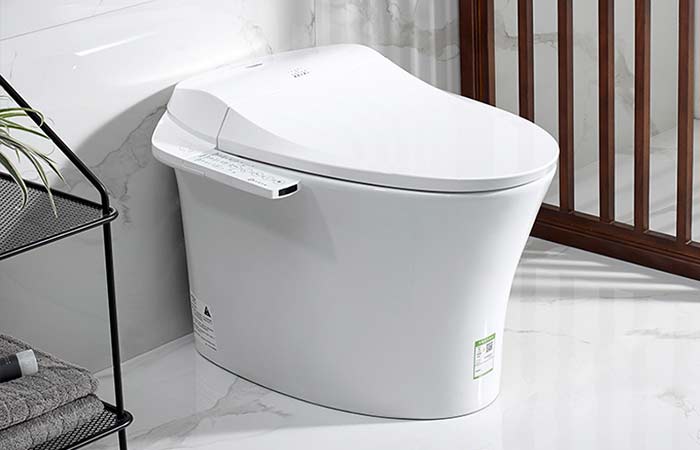
Tankless toilets, also known as wall-hung or wall-mounted toilets, have gained popularity in recent years due to their sleek design and space-saving features. Unlike traditional toilets that rely on a water tank to flush waste, tankless toilets operate on a different mechanism that offers several advantages. In this article, we will delve into the inner workings of tankless toilets and explore how they function.
1. The Flush Valve System
At the heart of a tankless toilet lies the flush valve system, which is responsible for the efficient removal of waste. This system consists of a flush valve, a water supply line, and a drainpipe. When the user activates the flush, the flush valve opens, allowing water to rush into the bowl from the water supply line. The force of the incoming water creates a siphon effect, which effectively clears the waste from the bowl and carries it down the drainpipe.
One key advantage of tankless toilets is that they use a smaller amount of water compared to traditional toilets. The flush valve system is designed to release a predetermined amount of water per flush, ensuring an efficient and effective removal of waste without any unnecessary wastage.
2. The Wall-Mounted Design
Tankless toilets are known for their space-saving design, which is made possible by their wall-mounted installation. Unlike traditional toilets that have a visible water tank, tankless toilets are mounted directly on the wall, with the flush valve system concealed within the wall cavity. This not only saves floor space but also allows for easier cleaning and maintenance.
The wall-mounted design also offers flexibility in terms of height adjustment. Since tankless toilets are not fixed to the floor, they can be installed at a height that is comfortable for users of different heights or those with mobility issues. This adjustability makes tankless toilets a popular choice for accessible bathrooms.
3. The Flushing Options
Tankless toilets offer different flushing options to cater to various needs and preferences. One common flushing option is the dual-flush system, which provides two buttons or levers for different water volumes. This allows users to choose between a full flush for solid waste and a reduced flush for liquid waste, further conserving water.
Another flushing option is the pressure-assisted flush, which utilizes air pressure to enhance the flushing power. When the flush is activated, water is forced into the bowl at a higher velocity, resulting in a more powerful and efficient flush. This type of flushing mechanism is particularly useful in commercial settings or households with heavy usage.
4. The Maintenance and Durability
Tankless toilets are generally low-maintenance and durable. Since they do not have a water tank, there is no risk of tank leakage or cracks. Additionally, the absence of a tank means that there are fewer components that can malfunction or require replacement.
Regular cleaning and maintenance are still necessary to ensure optimal performance. The flush valve system should be inspected periodically for any signs of wear or blockages. It is also important to check the water supply line and drainpipe for any leaks or clogs. Following the manufacturer’s guidelines for cleaning products and techniques will help prolong the lifespan of the toilet.
Conclusion
Tankless toilets offer a modern and efficient solution for bathrooms with limited space or those seeking a sleek design. By eliminating the need for a water tank, these toilets provide a space-saving option without compromising on functionality. The flush valve system, wall-mounted design, flushing options, and low-maintenance features make tankless toilets an attractive choice for both residential and commercial settings. As technology continues to advance, we can expect further innovations in the world of toilets, ensuring improved efficiency and sustainability in the years to come.






